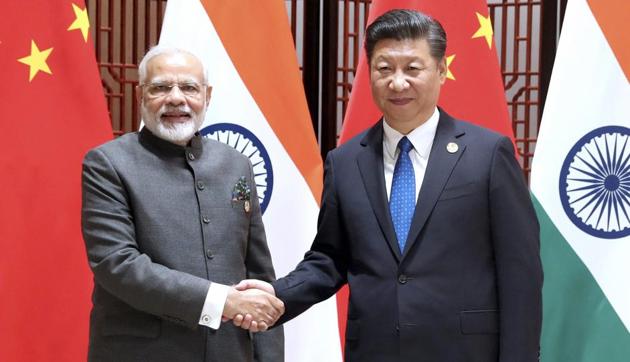How India has actually done a great job in dealing with the Dragon
Despite the power differential, India successfully raised the cost of China’s land grab activities at Doklam, a feat that even the U.S. has struggled to accomplish in East Asia. While China was relentless in the pursuit of its goals, and had the resources to spend, India managed to call its bluff, and simultaneously allayed Bhutan’s concerns.
If recent news reports are to be believed, China is back on the Doklam plateau in a veritable redux of the 73-day standoff that began in June this year. For its part, the foreign ministry has denied any change in the status quo following the “mutual disengagement” in late August. Those now skeptical of the government’s apparent inability to tackle China fail to appreciate that Doklam was never just a “stand-off”. It is part of a continuum of geo-political struggles - the current one is only naked in its manifestation as an outright territorial brawl — between the heavyweight and revisionist China and the defender India. It will not be the last, either.

Defusing the crisis at Doklam was never likely to reduce tensions across the 4,000 km border that India and China share. These border disputes are only symptoms of the Chinese determination to assert itself and claim pole position in an Asia that plays by Beijing’s rules. It was but a matter of time until China, rebuffed in its earlier attempt to needle India, decided to press New Delhi harder. By utilising its time-tested technique of ‘salami slicing’, and through the coercion of India’s smaller neighbours, China continues to seek to dent India’s credibility as a regional power.
China’s perception of, and strategy towards, India is shaped by the gaping asymmetry of power between the two countries. At $11 trillion, China’s economy is roughly five times the size of India. Were China to grow 2% and add over $200 billion to its GDP, India will have to grow by 10% to remain at the same place. In real dollar terms it may well be a decade or more before India begins to close this gap. In terms of security capabilities, this gap is most visible in defence expenditure, with China’s being approximately four times larger at $215 billion, compared to India’s $55 billion.
Even though the prognosis might appear grim, smaller countries have successfully deployed denial and deterrence strategies against larger opponents, for instance China against the U.S., in the past. Despite the power differential, India successfully raised the cost of China’s land grab activities at Doklam, a feat that even the U.S. has struggled to accomplish in East Asia. While China was relentless in the pursuit of its goals, and had the resources to spend, India managed to call its bluff, and simultaneously allayed Bhutan’s concerns.
The lessons from this incident for India’s foreign policy establishment are seminal, and can help shape future responses to Chinese aggression.
During a discussion in the US last month, a defence expert asked me if any other country has entered Chinese-claimed territory and stopped construction, as Beijing alleged, or intervened on behalf of a beleaguered third party as India claims. The subtext of the question was clear: India’s defiance of China was a unique moment. This is the first lesson: the spectre of an invincible, fire-breathing dragon must not awe India. New Delhi must, and can, stand up to China when its national interests are at stake and cleverly deployed political muscle will succeed in some instances.
The second takeaway is that the benefits of low-key diplomacy must not be underestimated. By engaging China away from the media glare, much to the vexation of New Delhi’s foreign affairs press, the Indian government successfully arrived at a favourable compromise. That this diplomacy was backed by a resolute security posture on the ground only bolstered New Delhi’s credibility, both at the negotiating table, and among regional partners. Deft and quiet diplomacy works and should be pursued as the first option.
Third, by participating in the BRICS summit in Xiamen shortly after the crisis, and investing in the future development of this group, India showcased the future direction of its relationship with China. For New Delhi, the lesson was that it is both possible, and necessary, to be politically assertive with China in some cases, while co-operating on others. Until the asymmetry between India and China is bridged, every Indian government will have to walk this tightrope.
Finally, New Delhi must realise the significance of creating new normative principles to manage regional affairs to get around the asymmetry of power with its neighbour. While boycotting China’s Belt and Road Initiative Summit in May, India cogently argued that regional integration must be premised on sustainable infrastructure investment norms and respect for sovereignty. That the US the EU and Japan have endorsed India’s position underlines the importance of “norm-fare” in the years ahead as an expansionist China continues to pursue its own version of the Monroe doctrine.
Samir Saran is vice president at the Observer Research Foundation and tweets at @samirsaran
The views expressed are personal



